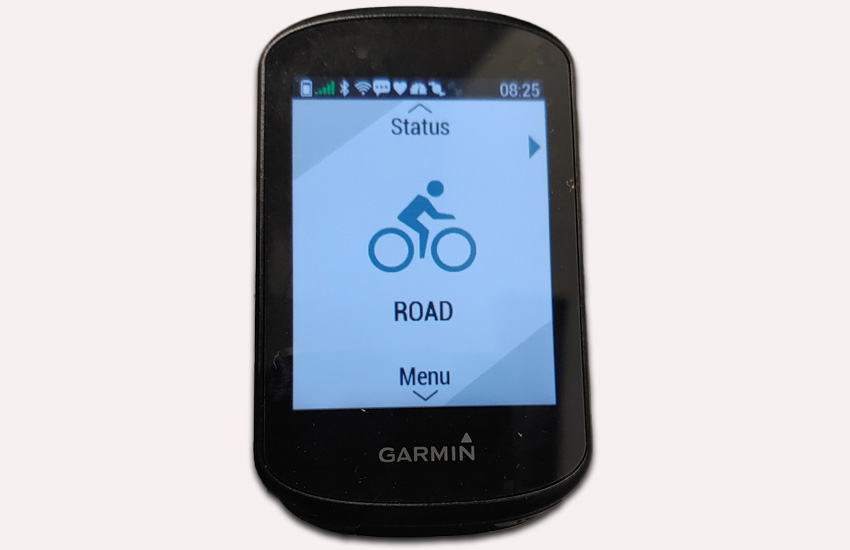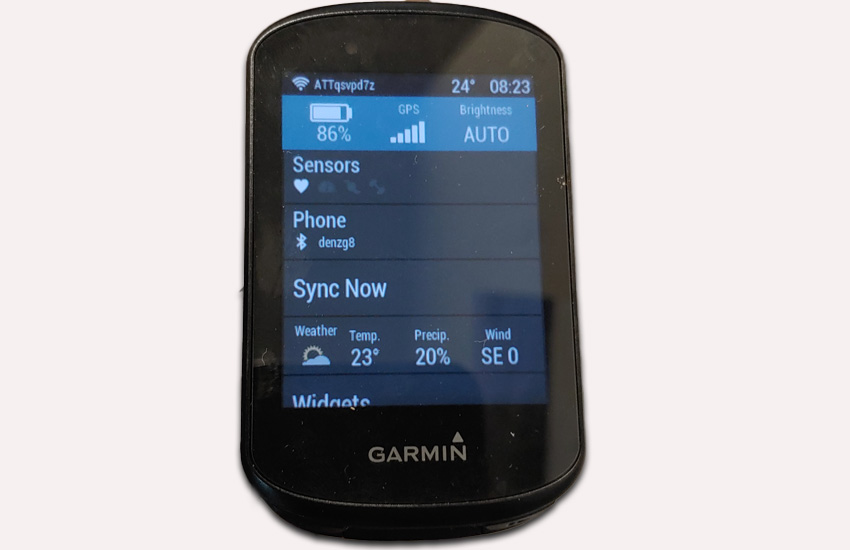You’ve got plenty of bike computers by now—but the Garmin Edge 530 raises a question: why this one? It’s got a 2.6″ color screen, button controls (no touchscreen), up to 20 hours battery, and all the Garmin bells for road and mountain rides. After years of updates and proven performance, does it keep up with newer rivals? Let’s crank the pedals and find out.
Our Top Pick
Design, Interface & Ergonomics
The screen is crisp, with sharp colors, even in sunlight. It has an automatic brightness sensor, so you rarely fiddle with settings mid-ride.
Buttons are sturdy and responsive—even with gloves. But multiple menus can test your patience. Not as sleek as a touchscreen, but totally usable. The micro‑USB port feels dated; USB‑C is overdue in future versions.
Navigation & Mapping
This thing excels at mapping. Full-color Garmin cycle maps, turn-by-turn routes, breadcrumb trails, even TrailForks on board. ClimbPro pops up climbs with distance and gradient.
Route import via Garmin Connect, Komoot, Strava—smooth. Map scrolling is slower, button-based map zoom feels like Etch-A-Sketch fiddling. But once you’re locked in, guidance is accurate. It reroutes fast, though search on device? Not its strong suit.
TrailForks Experience
If mountain biking, you’ll like this: TrailForks integration is easy—map shows trails nearby or guides you to preloaded ones. But it can falsely warn you’re off course. And riding while browsing maps? Better to pause and switch screens; browsing trails on a small button screen can feel slow.

Performance Metrics & Training Features
It’s a goldmine for data nerds. VO₂max, FTP, recovery advice, training load. Sync power meters, HR monitors, cadence and speed sensors via ANT+ or Bluetooth.
Add TrainingPeaks workouts—ready for it. MTB users get jump counts, grit, flow and hang time stats. Good fun if you like proof of progress.
Connectivity & Safety
GPS + GLONASS + Galileo means reliable tracking. Bluetooth and Wi‑Fi let you sync over-the-air, auto-upload ride files, and receive smartphone alerts.
LiveTrack, GroupTrack, crash detection, even a bike alarm. Crash alerts have saved rides—and possibly annoyed family from false alarms. That said, peace of mind beats uncertainty on solo rides.
Battery Life & Power Options
Garmin claims 20 hours. Cyclists report 16–19 hours with full sensors and navigation active. You’ll get 5–6 rides before recharge.
Charge time is quick—about 30 minutes for a full battery after multiple rides. Optional Power Pack accessory adds extra juice. Solid reassurance for multiday adventures.
Ease of Use & Learning Curve
Button-based control takes time to learn. It’s slower than touchscreen or smartphone-friendly rivals. But once you master it, menus make sense.
Initial setup takes minutes via buttons—longer than QR-based Wahoo models. But less app-dependent overall. Keep it simple: select profile, press start, ride.

Garmin Edge 530 GPS
Rugged bike computer offering training insights, navigation, and safety tools in a compact, long-lasting package.
Conclusion
The Garmin Edge 530 remains a punchy, data-packed bike computer. It’s not sleek but it works. Battery life impresses. Mapping is comprehensive. Training metrics are next-level.
It won’t win any UI design awards, and micro‑USB feels dated. But if you’re after performance, dependability, and insight—not just convenience—this is still a strong challenger even today. A solid ride partner for serious cyclists.
Frequently Asked Questions (FAQs)
Do I need touchscreen?
Not if you’re fine with buttons. Gloves, mud, rain—buttons win for reliability.
How accurate is GPS?
Very. Tracks match true routes within a few meters or 0.2% on the track.
Can it handle rain and mud?
Yes. IPX7 waterproofing and buttons mean it won’t fold in bad weather.
How long before I charge?
Five to six 2-hour rides. About 30 minutes on the charger to full.
Should I upgrade to 540/840/1040?
If you want USB‑C, touchscreen, multi-band GNSS or solar, yes. Otherwise, the 530 stays relevant and capable.





